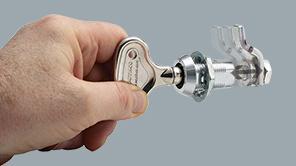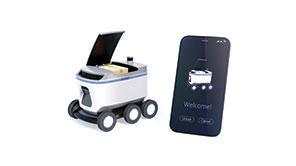Monitoring and Protecting Retail Assets with Intelligent Electronic Locks

With internal theft cited as one of the top contributors to retail shrinkage today, the ability to control access to high value items is at the forefront of loss prevention efforts. Many retailers have traditionally relied on lock-and-key mechanisms to secure more expensive items such as electronics, jewelry and over-the-counter-medicines within display cases on the retail floor. In many situations however, poor key management often leads to unauthorized access, increasing the potential for theft.
The primary issue with mechanical keys is that they cannot be effectively tracked – there is no way of knowing who accessed the display case and when. One or several keys may be shared by personnel throughout the day and through multiple shift changes, making it harder to prove that a theft was committed by any one employee in particular.
Retailers can increase the physical security of high value items by retrofitting their existing display cases and cabinets with electronic locking mechanisms. These devices combine the security of a mechanical lock with intelligent electronic access for remote monitoring and control. With this level of intelligence, loss prevention personnel can manage employee access and document activity more efficiently.
How Does Electronic Access Work?
An electronic access solution combines three integral elements into one cohesive security system. A complete solution includes an access control or input device, an electromechanical lock or latch, and remote monitoring capabilities. The access control device, or user interface, such as a digital keypad, RFID proximity card reader, or biometric reader signals the intelligent latch to lock or unlock the enclosure door. Upon actuation, a digital record of activity is created and archived for future audit trail reporting. Local alerts can also be provided with visual indicators or audible alarms.
Electromechanical locks are a critical component of any electronic access system, allowing networked access control through the validation of user credentials. It is imperative that the appropriate intelligent locking device is selected, as the entire security system is dependent upon the lock’s function. Electronic locks can transmit status with a simple indicator light or a sophisticated networked monitoring system, depending on the desired level of security and the value of the items stored in the cabinet.
Managing Assets Remotely
The remote monitoring capabilities provided by electronic locks deliver an added layer of security for high value assets. Each time that an electronic lock opens or closes, a signal is sent to a remote monitoring system to confirm and log access, leaving an “electronic signature” and creating an audit trail of the event.
Intelligent electronic rotary locks for example, are ideal for retail enclosures as they provide installation, versatility and high strength. And with the appropriate integrated electronic intelligence, the lock can provide the electronic signature necessary for monitoring and tracking access remotely. Each time the door or panel of an enclosure is opened or closed, an output signal is sent by the latch to a monitoring system to confirm and log access.
Depending on the configuration, electronic access reporting can provide more than just simple open/closed information – such as which credential activated the electronic lock and the time and duration of the event. The data and remote monitoring capabilities of electronic rotary latches make them an ideal choice for managing high-value inventory targeted by criminals.
Accountability and Accessibility
Thefts of high value items by a retailer’s own employees are all too common, creating a strong argument for enhanced access control. Traditional lock and key systems are not trackable in that there is no way of knowing who accessed the case and when, making it harder to prove that theft was committed by an employee.
Compared to mechanical locks which require expensive re-keying when a key is lost or stolen, intelligent access devices, such as proximity card readers and RFID remote controllers, can be easily re-programmed to accommodate access credential changes including those needed for personnel changes. Simplified key management also allows for separate, unique electronic “keys” or credentials with electronic access solutions.
Electronic access can also be used to limit employee access to specific enclosures. For example, the system can be programmed so that only the credentials of authorized personnel unique credentials will can open a display case housing the latest tablets or ereaders. Store managers can easily manage and monitor unique user access codes and change codes without physically distributing new keys or access devices to employees.
Adding an electronic access system to a retail enclosure or display case also promotes accountability and keeps employees honest, as they are less likely to experience a lapse of judgment if they know they are being monitored. When selecting the appropriate electronic access option, store managers and loss prevention specialists should choose a solution that provides audit trail capabilities and allows them to monitor and control access to their assets, preventing the risk of theft.



